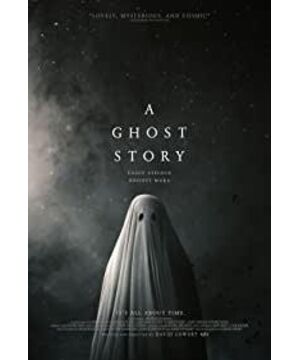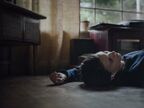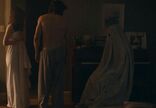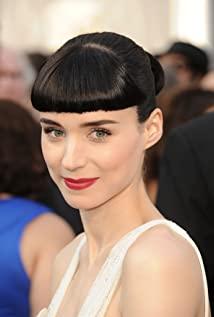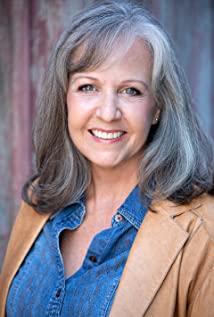"He left the ancient house, left her, and walked north and east, watching the stars in the southern sky move, searching the ancient house, but saw him sinking under the grassland."
Movie Title: Floating Ghost
Director: David Lowe
Starring: Rooney Mara, Cassia Fleck
Release time: 2017
The first sentence of Woolf’s short story "The Haunted House" "No matter when you wake up, you always hear the sound of closing the door" is also a sentence in the opening of the movie "A Ghost and a Floating Life". I don’t know if the director David Lowe intended it. For this reason, after watching "A Floating Ghost", there are a few scenes in it that really resemble the content described in the novel "Haunted House", such as "He left the ancient house, left her, walked north and east, looking at the south The stars in the sky are shifting, searching the ancient house, but seeing him sinking under the grassland." The thinking about life and death to be conveyed in the novel is also the core theme of this movie.
The protagonists of the movie "Ghost Floating Life" are cohabiting couples M and C. After the male protagonist C died in a car accident, he turned into a ghost in a bed sheet and returned to the house. After experiencing the female protagonist M's departure, he moved to a new tenant and house. After being demolished, it was built into a tall building and turned into a vast grassland. After a cycle of reincarnation, the ghost finally took out the slip of paper stuffed into the wall, obsessed with the story of disappearing after putting it down. The long and deep background music combined with the large number of long shots and fixed telephotos in the film make the whole movie as slow as an aria, but long and powerful. As for how the movie embodies its motif, I mainly analyze it from three aspects: narrative structure, lens language, and detailed interpretation.
1. Narrative structure
The film adopts a circular narrative structure. At the beginning, the couple M and C lived together. In the room, the buckle wall and the sound of things falling on the piano would occasionally appear. At the end of the film, the ghost returned to the house and saw the couple M and C move into the house, repeated the scene at the beginning of the film, and explained that the strange noise made by the house at the beginning was made by the ghost. And just as the heroine M moved away after the death of the hero at the end of the film, a new ghost appeared in the house, standing in front of the window, and a new cycle began. In addition to the overall circular narrative, there is also a closed-loop structure in the specific storyline. For example, before the heroine decided to move, she recalled the scene where the hero put on headphones for her to listen to a song. At the end of the film, she explained the specific background of the plot. The hero and the hero could not reach a consensus on whether to move. The reason why the Lord left:
"Why do you leave?"
"No choice."
At the end of the film, the reason why the protagonist refuses to leave is explained:
"There has a history ."
In such a stalemate, the male protagonist put on headphones for her to listen to the song. When the female protagonist finished listening to the song, she took off the headphones and walked into the room. To some extent, this explains the reasons for the development of the details of the story with the help of the narrative technique of the ring structure. And the ghost that had witnessed this entire cycle disappeared the moment the note was opened. Ghost is the dead male protagonist C. He returned to the house and watched his lover leave. Through the dialogue with the ghost next door, we can judge that the reason why he stayed in the house at first was to wait for his lover M to return, and wanted to take out that A piece of paper left. But then, like the ghost next door, he also forgot who he was waiting for, only that piece of paper was his obsession that never left. He witnessed the move in of a single mother’s family in Mexico, witnessed the divination of many people inquiring about the emptiness of life, witnessed the collapse of the house and the reconstruction of modern mansions, the ghost jumped back to the original prairie, idyllic poetry Life, witnessed a family of four being shot and killed, and finally waited until the very beginning.
In the narrative of single mothers in Mexico, the director adopted a method of scene switching to promote the narrative. From the perspective of ghosts and ghosts, they shuttled through the various rooms. In each room, things happened at different times. Then he saw two children opening the door to play around in the room. He followed them into the room. The light changed from the dark at first to the warm yellow light, and there were new residents in the room. After that, every time you enter a house, the story line will advance, and eventually the residents will move out.
When explaining the life state of the heroine M after losing her lover, the director explained the passage of time through fixed scenes, the same actions, and the continuous changes in character modeling. For example, through a long shot, the film repeats the scene of the heroine walking from the room to the door, and the heroine's dynamic presentation is contrasted with the silent gaze of the ghostly stillness, which also shows a sense of space-time separation. The ghost is incompatible with the heroine's life at this moment. He can only watch everything in front of him slowly change and leave. For example, in the scene of the hostess leaving in a car, the ghost is just standing in front of the window and watching, without emotion. Meet the new changes and prepare for the necessary farewell. A long push shot is that the ghosts gradually become smaller in the shot, adding a touch of loneliness and desolation.
Second, the lens language
The lens language of the whole film is poetic. The long and fixed lenses are constantly presented and interlaced. The director uses the classic 1.33:1 academy ratio to make the picture appear as a square frame for the audience to watch the movie. At times it brings a sense of peeping and alienation. Including many pictures, framed scenes appear, giving a sense of space.
There are many long shots in the film, many of which are to create a specific atmosphere. For example, in the plot of the male protagonist's death in a car accident, a panning shot that continues to move to the right is used, from the panoramic view of the house to the white smoke. Appears, and then to the scene after the car accident, accompanied by sad background music, rendering a kind of silence after death.
For another example, when the hostess M returned home, she saw the pie that the landlord gave her. She leaned against the cupboard and started eating the pie with a fork. It was also a long fixed shot. The ghost watched her from the side of the room and was eating. In the process, she kept making the sound of hitting the plate with a fork, and the hostess eating pie without interruption. In this silent and continuous state, she could clearly feel the ups and downs of her emotions, wave after wave of depression until finally letting go. Pai, turned and ran to the bathroom to vomit, even the hostess's sadness was so depressed and heavy. He was not a spewing out of emotional catharsis, but an emotional overflow that had been suppressed for a long time.
And the use of some long shots has become the silent emotional expression of the protagonist. For example, in the scene in the hospital, a long lens with a fixed angle of view was used. After seeing the body of the male lead C, the heroine M first called the nurse to leave, then called the nurse back, and then asked her to leave. This series of actions It can be seen that the heroine's heart is entangled and at a loss. He did not use too many body movements and expressions to express. On the contrary, the heroine looks very calm at the moment, but it is recorded through a long-term lens that does not switch. , That kind of hidden emotion will always reveal clues through the calm and naked lens.
One of the highlights of the film is that the director did not use a standard frame to shoot, but used a square frame picture format. Many directors in China also adopted this format. For example, the film "I am not Pan Jinlian" uses a round frame. . When thinking about the director’s intentions, as far as my personal viewing experience is concerned, the form of the square frame and the large shady surrounding it gives me a sense of peeping, or that I am always going as a bystander. Looking at the ghost’s life, there is a sense of alienation and distance, and this is also the keynote of the film’s style. The ghost is a person from beginning to end. We cannot empathize with him. We can only watch his life and the reincarnation he experienced from the side. And another place to pay attention to is that the frames appearing in the lens, such as door frames, windows, etc., appear frequently in the film. On the one hand, he presents a peculiar sense of layering, and on the other hand, through different frames , Using shading to extend the space.
Three, detailed interpretation
There are many recurring details in the film, and behind these details there is undoubtedly the message that the director wants to convey.
The light spots on the wall appeared three times in the film. The first time was at the beginning of the film. The male and female protagonists were snuggling on the sofa, while moving light spots appeared on the walls of the living room. The second time was when the heroine was about to move away, she was painting the walls. At that time, a spot of light appeared on the wall; the third time was at the end of the film, when the ghost opened the note and disappeared, the spot appeared. And the star shift in the southern sky depicted by Woolf in "The Haunted House" has appeared many times in the film. The unknown light spots and the vast stars may all imply the smallness of human beings in the vast universe. The light spots are just them. A glimpse of life and the universe is not the whole picture.
Ghosts jumped down from tall buildings. For the circular narrative, I feel that there is a fragmentation in this scene. The ghostly ride has moved from the modern era of high-rise buildings to the prairie, and to the pastoral life of the middle period. This may be like what the fortune teller said at the party that time will pass, the plate will drift, we will return to the original, no longer exist, and everything great will disappear. And the ghostly jump is just like expressing the rapid passing of time. In a blink of an eye we are back to the original, and a new cycle begins again.
The content on the note. As the ghosts suddenly disappeared after seeing the note, the content of the note will not be revealed, but this persistence of maintaining the ghosts and charms to endure thousands of years of loneliness, and the obsession of facing the vicissitudes of life alone will disappear with the ghosts and charms. After all, content is not the point, his existence is the reason for everything
Death is not a scary thing, on the contrary, it is a longer existence than life. Heidegger believes that death is just another state of human existence, and we need to stand on the pinnacle of death and overlook the panorama of life. The director’s weakening of personal images in the film, for example, the male and female protagonist has no name and is almost silent. It just gives us a stronger sense of substitution. Through the glimpse of ghosts and ghosts, the existence of life, death and the universe A little thought. When the stars shift, the cycle of life is going on steadily, slowly and never stopping, and we will spend a short and splendid life, and then disappear.
Safe, safe, safe, again you found me.
View more about A Ghost Story reviews


